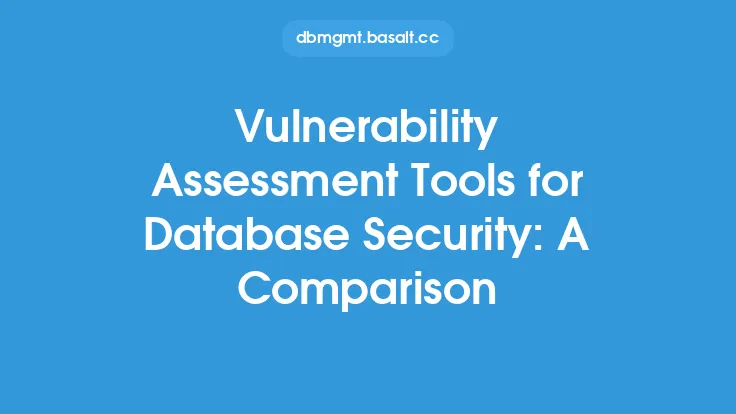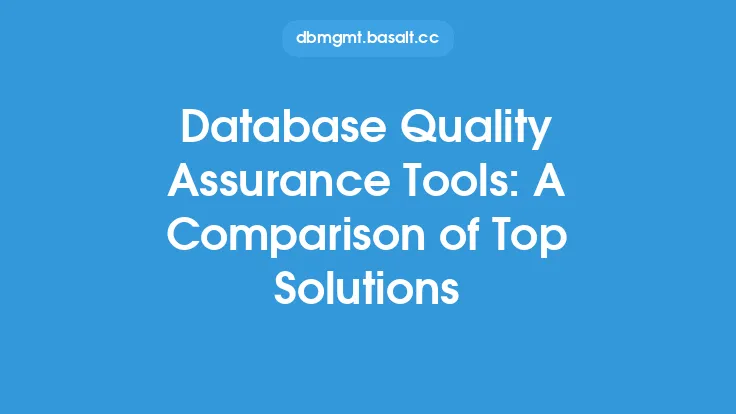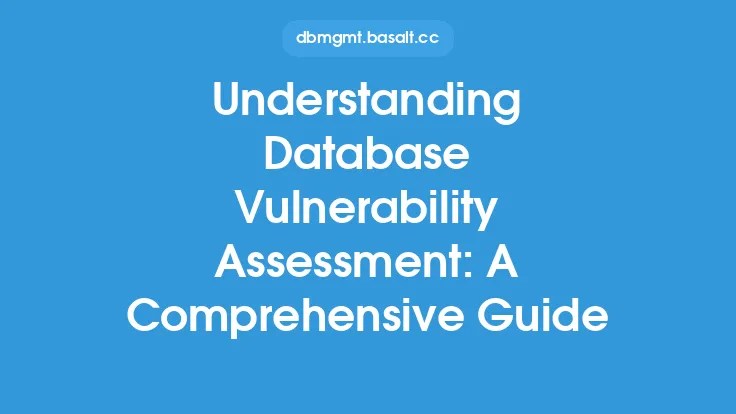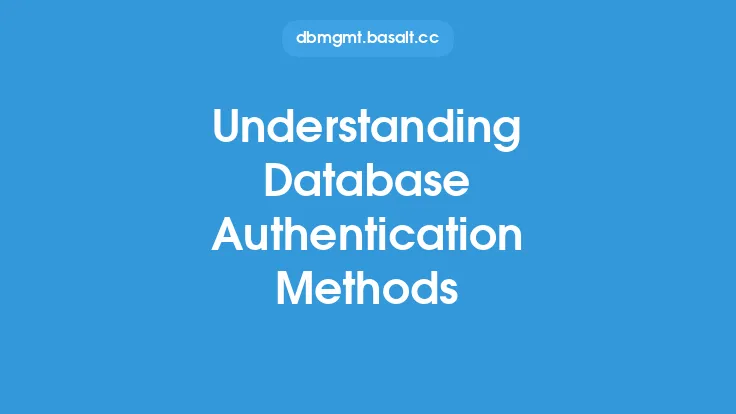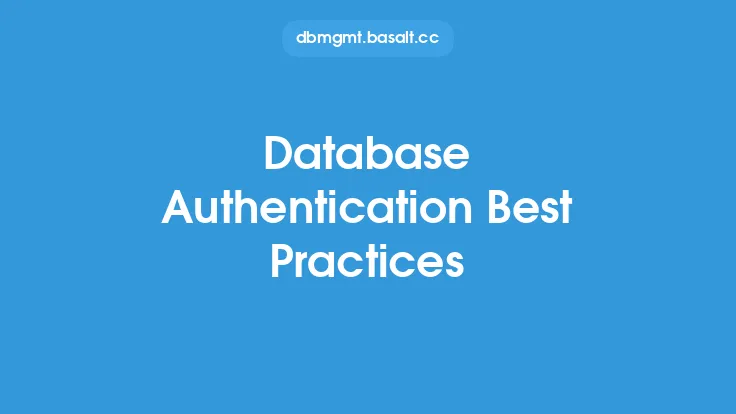Database authentication protocols are a crucial aspect of database security, as they ensure that only authorized users can access and manipulate the data stored in a database. With the increasing amount of sensitive data being stored in databases, it is essential to have robust authentication protocols in place to prevent unauthorized access. In this article, we will delve into the different types of database authentication protocols, their advantages and disadvantages, and compare their security features.
Introduction to Database Authentication Protocols
Database authentication protocols are used to verify the identity of users attempting to access a database. These protocols can be based on various factors, including passwords, biometric data, smart cards, and Kerberos tickets. The primary goal of these protocols is to ensure that only authorized users can access the database, while preventing unauthorized users from gaining access. Database authentication protocols can be categorized into two main types: password-based authentication and non-password-based authentication.
Password-Based Authentication Protocols
Password-based authentication protocols are the most commonly used type of authentication protocol. These protocols rely on a username and password combination to verify the identity of the user. The most widely used password-based authentication protocols include SQL Server Authentication, Oracle Authentication, and MySQL Authentication. SQL Server Authentication uses a username and password to authenticate users, while Oracle Authentication uses a username and password, as well as an optional authentication method such as Kerberos or smart cards. MySQL Authentication uses a username and password, as well as an optional SSL/TLS encryption.
Non-Password-Based Authentication Protocols
Non-password-based authentication protocols use alternative methods to verify the identity of users. These protocols include Kerberos Authentication, Smart Card Authentication, and Biometric Authentication. Kerberos Authentication uses a ticket-based system to authenticate users, while Smart Card Authentication uses a physical token to verify the user's identity. Biometric Authentication uses unique physical characteristics, such as fingerprints or facial recognition, to authenticate users.
Comparison of Database Authentication Protocols
When comparing database authentication protocols, several factors need to be considered, including security, performance, and ease of use. Password-based authentication protocols are generally easy to implement and use, but they can be vulnerable to password cracking and guessing attacks. Non-password-based authentication protocols, on the other hand, offer higher security, but can be more complex to implement and use. Kerberos Authentication, for example, requires a Kerberos server and client software, while Smart Card Authentication requires a smart card reader and card.
Security Features of Database Authentication Protocols
The security features of database authentication protocols vary depending on the type of protocol used. Password-based authentication protocols typically use encryption and hashing to protect passwords, while non-password-based authentication protocols use alternative methods, such as ticket-based systems or biometric data. SQL Server Authentication, for example, uses encryption and hashing to protect passwords, while Kerberos Authentication uses a ticket-based system to authenticate users. Oracle Authentication uses a combination of encryption, hashing, and optional authentication methods, such as Kerberos or smart cards.
Advantages and Disadvantages of Database Authentication Protocols
Each database authentication protocol has its advantages and disadvantages. Password-based authentication protocols are generally easy to implement and use, but they can be vulnerable to password cracking and guessing attacks. Non-password-based authentication protocols, on the other hand, offer higher security, but can be more complex to implement and use. Kerberos Authentication, for example, offers high security, but requires a Kerberos server and client software, which can be complex to set up and manage. Smart Card Authentication, on the other hand, offers high security, but requires a smart card reader and card, which can be expensive to implement.
Best Practices for Implementing Database Authentication Protocols
When implementing database authentication protocols, several best practices should be followed. First, a strong password policy should be implemented, which includes requirements for password length, complexity, and expiration. Second, non-password-based authentication protocols, such as Kerberos or Smart Card Authentication, should be considered, especially for high-security environments. Third, encryption and hashing should be used to protect passwords and other sensitive data. Finally, regular security audits and testing should be performed to ensure the security of the database authentication protocol.
Conclusion
In conclusion, database authentication protocols are a critical aspect of database security, and several types of protocols are available, including password-based and non-password-based authentication protocols. Each protocol has its advantages and disadvantages, and the choice of protocol depends on the specific security requirements of the database. By following best practices, such as implementing a strong password policy, using non-password-based authentication protocols, and encrypting and hashing sensitive data, organizations can ensure the security of their databases and protect against unauthorized access.
